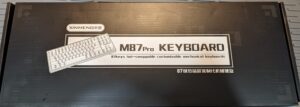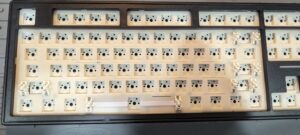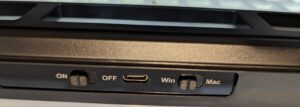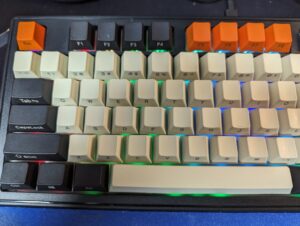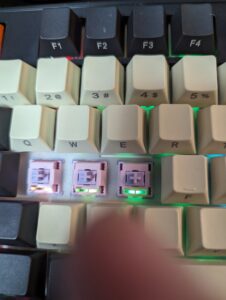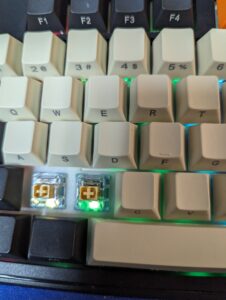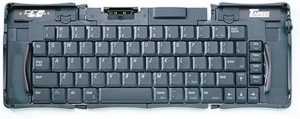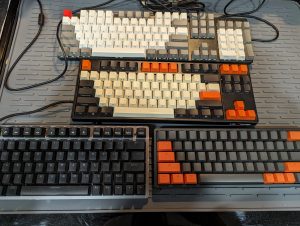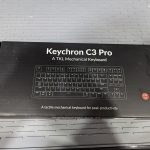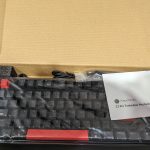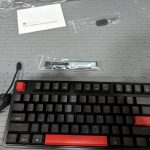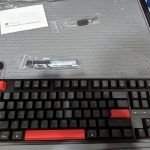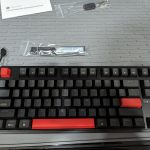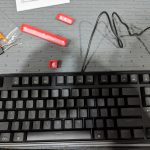Continuing my keyboard experimentation, I wanted to see what you could get in a build project for as cheap as possible. So, this is the M87 Pro Keyboard, a TKL keyboard that is hot swappable, with south facing RGB LEDs. It was going for $29.99 before a 20% instant coupon. I didn’t disassemble it, but the video of its disassembly shows a gasket mount with 5 layers.
I already had some keycaps I had taken off another keyboard for cleaning(they were getting a bit shiny), and I decided this was also a good time to try some new types of switches. Because the description for the product said, “Sound Absorption Foam & Silicon Bottom Pad…Each press feels like a symphony of comfort and precision…”, I opted to try two types of advertised silent switches.
The Akko V3 Fairy Linear Silent Switch and the Epomaker Sea Salt Silent Linear Switch, as pictured below. Of course, my first box of Fairy switches showed up pre-opened from Amazon(which I assume was a return they didn’t detect). I apparently wasn’t the only person with this problem, as there were similar reviews. Either way, the Fairy feels a bit better, is definitely more silent when I type, and is actually cheaper. At the same time, the Seat Salt is a box type switch, seems a stronger construction(none of them showed up broken or pre-used) and are rated for 10 million more uses. So, I can see the benefits of both of those.
I did consider some alternatives to try in the sub-$50 kit space. You can find some even cheaper on Aliexpress and sites like that, but there is a comfort with using Amazon, I suppose. The CIY GK68 Wireless Hotswap Keyboard is only $37.90 at time of writing here, and that adds in, obviously, wireless capability using AAA batteries, as well as being a 65% layout as opposed to TKL, and comes in a few colors.
Also, being as keyboard kits, unless they are higher end, can cost more than keyboards where you just discard the switches they provided, you can also consider some budget models that you intend to completely strip.
Much to my annoyance, or happiness(just wish I’d known it was coming), the Keychron C3 Pro, which was a budget model I really like, now has a hotswap version. I recommend it even more, and it is selling for $48 at the time I write this for the hotswap version, and I’ve seen the regular version for as low as $30.
